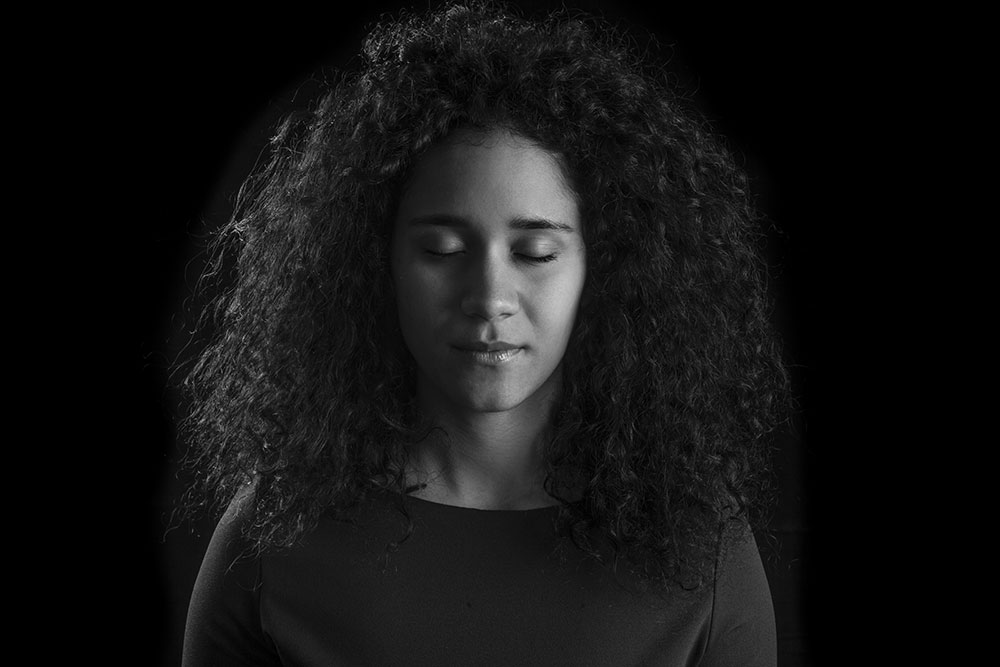Your comprehensive guide to meditation

If you’re feeling curious about starting to meditate, or have begun but don’t know where to go next, here’s a guide to help. Once you’ve found a technique that most suits you, the next step is regular practise. The gifts that meditation brings will help you face the challenges of life. There’s much literature on, and research into, the benefits of meditation, but it’s only through doing it that you can discover where it leads you.
1. MINDFULNESS
ORIGIN
The Eastern Buddhist roots of mindfulness are 2,500 years old. Many of the more widespread secular mindfulness practices found in the West today are due, in part, to the work of the molecular biologist Jon Kabat-Zinn, who began developing and teaching a non-Buddhist version of mindfulness in Massachusetts in the 1970s.
THE PRACTICE
There are a number of ways to practise mindfulness meditation – and you might choose to do it lying down, sitting or walking. The breath, because it is ever-present, is often used as an anchor for the mind; the thing you keep returning to each time your attention wanders.
Alternatively, physical sensation, in practices like a body scan, is used as the focus. Jon defines mindfulness as ‘paying attention in a particular way: on purpose, in the present moment, and non-judgmentally’.
PRACTICAL TIPS
Start by becoming aware of your breath right now, and following a few full cycles of the breath for the full inhalation and exhalation. Next, visit franticworld.com for free, guided practices from Professor Mark Williams of Oxford University, or download the excellent Headspace app to hear Andy Puddicombe, a former Tibetan Buddhist monk, guide you in the basics.
If you’re interested in a course, bemindful.co.uk offers a registry of teachers subscribing to the UK Good Practice Guidelines.
GREAT IF
■ You’re feeling curious about whether meditation might benefit you
■ You’re struggling to cope
2. MINDFUL SELF-COMPASSION
ORIGIN
As the heading suggests, mindful self-compassion falls under the umbrella of mindfulness, but is worth mentioning separately because it specifically focuses on treating the self with compassion. The origins of these practices are also to be found in Buddhism. Psychologists Dr Kristin Neff and Chris Germer are key figures in the adoption of these practices in the West.
THE PRACTICE
Mindful self-compassion includes awareness of physical sensation but its goal is to help you cultivate talking to yourself with the gentleness you’d offer a friend. The core components are treating the self with kindness rather than judgement, recognising our shared humanity rather than our isolation, and seeing our suffering and difficulties with an open-minded awareness.
Start with a self-compassion break: bring to mind a situation that is causing you some difficulty or pain at this moment in time. Recognise your struggle by saying to yourself that ‘This is a moment of suffering’. Remind yourself that suffering is something everyone experiences. Finally, request that you be ‘Gentle and compassionate with yourself in this moment of difficulty’.
Check out self-compassion.org for Dr Kristin Neff’s guided practices, or get her book, Self Compassion: Stop Beating Yourself Up and Leave Insecurity Behind (£14.99, Yellow Kite).
GREAT IF
■ You’re feeling overwhelmed by difficult feelings
■ You’re very self-critical
3. LOVING-KINDNESS MEDITATION
ORIGIN
Loving-kindness meditation or Metta Bhavana is a central component of the Buddha’s teachings. Gotama Siddhartha, the Buddha, said that all of the meditation practices he taught were for the cultivation of metta (goodwill).
THE PRACTICE
It offers feelings of benevolence and a freedom from suffering to the self and to others. Sitting quietly, you begin by bringing yourself to mind and silently repeating: ‘May I be well, may I be free from suffering, may I be happy.’ Then draw those who you love to mind, asking: ‘May they be well, may they be free from suffering, may they be happy.’
In turn, draw others to mind, those towards whom you have no particularly strong feelings, then those whom you find difficult, and finally, all living beings. The meditation doesn’t require that you like everyone, but instead emphasises our shared desire as humans for wellness and happiness. Give yourself a period of between 10–30 minutes for this practice.
PRACTICAL TIPS
This is a simple practice and you can experiment to find the words that feel right for you. Imagining someone you know as a baby can help to evoke warm feelings. Free apps like i-Qi Meditation Timer can help you to focus. Head to dharmaseed.org or download the Dharma Seed app to hear guided metta meditations.
GREAT IF
■ The anger you are feeling towards other people is getting you down
■ You’d like to spread some love and good feeling
4. VEDIC MEDITATION
ORIGIN
The Vedic period began around 10,000 years ago in northern India. Vedic meditation has been passed down through an oral tradition from one Vedic master to the next. Transcendental Meditation is a branch taught by Maharishi Mahesh Yogi, who became famous in the 1960s as the guru to The Beatles.
THE PRACTICE
A personalised mantra is used during a period of sitting once or twice for 20 minutes a day. UK teacher Will Williams explains one is taught how to allow the resonance of the mantra to have an effect, to ‘de-excite the nervous system into a profound sense of relaxation from where it can repair its sensory capabilities’.
PRACTICAL TIPS
Will Williams offers several free introductory talks each week in Soho. A beginner’s three-day course is £294, after which you have free access to 24 classes a month, as well as follow-up support. Visit willwilliamsmeditation.co.uk or teacher Naomi Watts at belemental.com
GREAT IF
■ You can commit to a course
■ You’ve experimented with other practices and not yet found something that works for you
5. KUNDALINA YOGA
ORIGIN
Kundalini yoga is mentioned in the sacred Vedic collection of writings known as the Upanishads. Initially a science of energy and spiritual philosophy, the physical practice of Kundalini yoga was developed later and was brought to the US by the Sikh Yogi Bhajan in the 1960s.
THE PRACTICE
The majority of meditation practices in Kundalini yoga take place in the seated position. From the seated position, movement using the hands and arms is combined with specific types of breathing to work on the energy body (as opposed tothe physical body). The seat of the Kundalini is at the base of the spine and is often symbolised as a coiled snake. While practising, the energy rises up through the chakras.
The breath of fire, a fast pumping breath through the nostrils, is used to help calm the ego voice in your head. This lasts for three minutes before you move on to a more gentle meditation.
PRACTICAL TIPS
Attending a class is a good way to learn physical practices. If you’re after something contemporary with a modern soundtrack (think Taylor Swift rather than chanting), check out Lucy Sherwood’s events at rockandrawjewellery.com. Lucy, herself, finds the Spirit Voyage channel a useful YouTube resource.
GREAT IF
■ You live life at a pace and aren’t keen on sitting still in silence
■ You want to exercise and meditate
6. SELF-ENQUIRY MEDITATION
ORIGIN
Atma Vichara or ‘Who am I?’ meditation is part of the ancient Hindu Vedanta tradition. Sri Ramana Maharshi popularised the teaching in the first half of the 20th century. His ashram is in Tiruvannamalai in Tamil Nadu, India.
THE PRACTICE
This focuses on enquiry into our true nature by considering: ‘Who am I?’ The ‘I’ that preoccupies so much of our waking life is the ‘I’ of the ego. Questioning this works as an anchor to draw the attention back and helps you to enter into the pure feeling of consciousness.
PRACTICAL TIPS
Ask yourself the question ‘Who am I?’ then let go of any thoughts that try to respond. Next, check out ramana-maharshi.org.uk for meditation and study groups. sriramanamaharshi.org has further information.
Read Be As You Are by David Godman (£13.99, Penguin), and for teaching and retreats, look up James Swartz at shiningworld.com/site
GREAT IF
■ You’re wondering what the purpose of getting the mind clear is
■ Your ego is making life challenging
7. VISUALISATION
ORIGIN
When did we, as humans, first visualise or imagine a scene in our minds? The ability to access and use the realm of the imagination is a gift that crosses all cultures and ages.
THE PRACTICE
Very much depends on your context. For sports men and women, the visualisation will involve tracing the steps of their event and imagining success at each stage.
For someone in therapy, it might involve imagining meeting someone who has a gift or some guidance to help you transcend the difficult situation in which you find yourself. The possible scenarios and imagined scenes are endless. You may guide yourself or prefer to be guided by someone else.
PRACTICAL TIPS
Start by imagining biting into a juicy sharp lemon. Observe carefully how your mouth responds to this imagined scenario to see the connection between your mind and body.
Next, design a visualisation that responds to a particular challenge you’re facing. You might write a script for yourself, or even record yourself giving the guidance. It’s useful to start a practice with a few slightly deeper breaths with longer exhalations..
GREAT IF
■ You’re searching for an answer to something
■ You’re facing a specific challenge in your life









